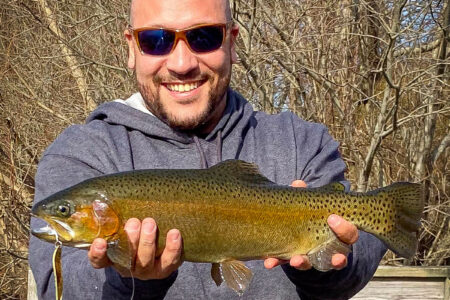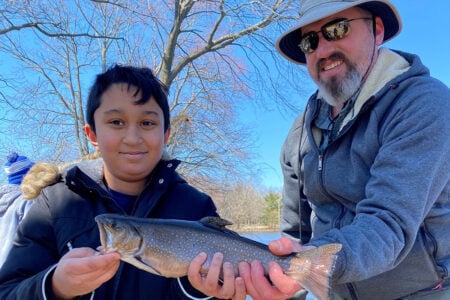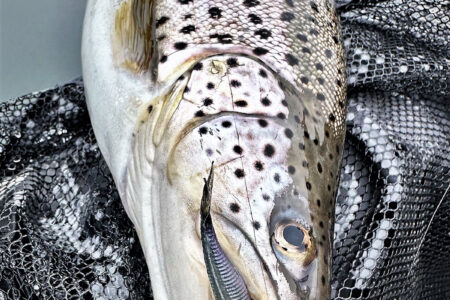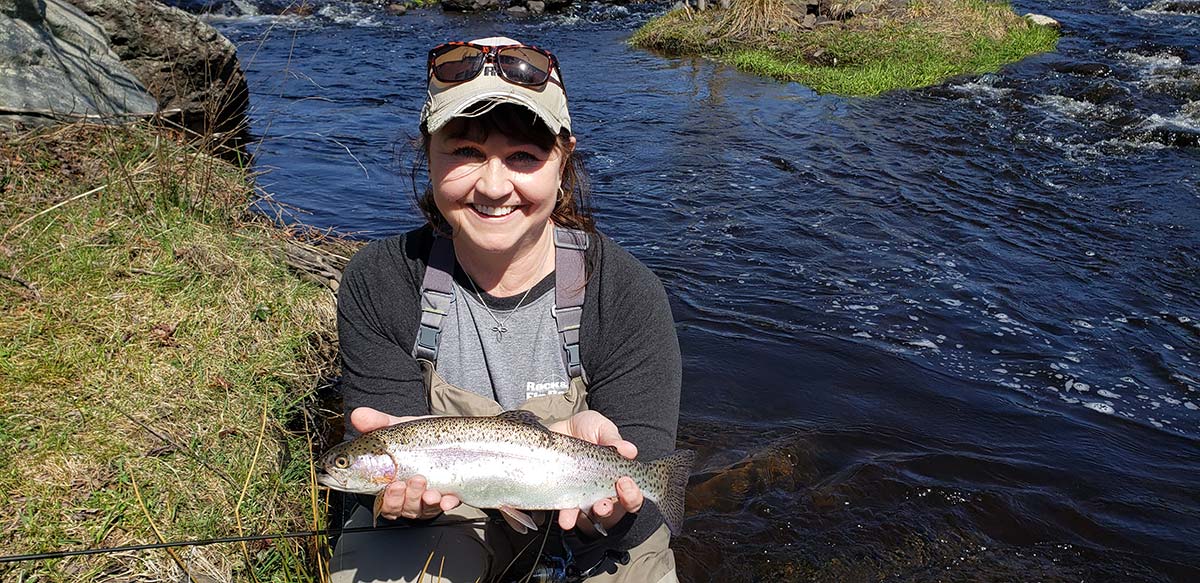
Stocked trout, holdovers or wild, it doesn’t make a difference in the overall ‘Ong experience.
The Musconetcong River and Pohatcong Creek, and the Capoolong, Lopatcong and Lockatong creeks in their respective sizes, flows and habitats, all tributaries of the Delaware, have delivered stellar trouting over the past century and, barring crucially close residential and/or commercial development and subsequent bankside and aquatic degradation, will continue doing for the foreseeable future and (hopefully) beyond.
The suffix ‘Ong is a common thread of the language of the Lenni Lenape tribes, as well as tristate regional sub tribes like the Munsee, all with meanings regarding either the water or the yield of the bordering soils. Interesting, to say the least, and gives one an appreciative, be it fleeting, feeling of the antecedents of the swims’ origins as a salmonid tugs the line or, in the case of the big brother Musconetcong, pulls drag.
The Musconetcong (“Musky” in Jersey trout fishing parlance) is the most heavily stocked of the New Jersey’s 16 major trout rivers and regarded by many as the most popular, i.e. most heavily fished. Some will argue that the South Branch of the Raritan or the Big Flat Brook are more favored, and that certainly looks the case on the respective Tuesday and Friday stocking days and those weekends. A good case, for sure, but during the spring season at least, it’s the Musky that receives the majority of rod and reel attentions.
Which deflects angling pressure from its ‘Ong kin. Save for Tuesdays on the Pohatcong during April and May, the other three venues offer unfettered fishing in their smaller, tighter, but still trout-stuffed confines. This trio, the Capoolong, Lopatcong and Lockatong are recipients of trout five times each during the in-season stocking period, and save for weekends into late April, are basically free and clear of rod ‘n reel intrusion.
The stocked stretches of the ‘Ongs are a combined 49.6 miles. That’s a lot of water to cover, and as April melds to May, one will find that the fifth turn of the calendar page in particular, can prove uniquely challenging, particularly on the three skinnier swims and the upper reaches of the Pohatcong. Save for the Musky which is “wader water,” hip boots and knee highs will suffice, as walking in the water will likely scare trout in the targeted presentation unless at an appreciable distance.
The Musky
Musconetcong River (Morris/Hunterdon/Warren counties): Lenape translation Moschaken hannek meaning “clear stream,” the Musky will receive 53,540 rainbows this spring including the pre-season release and seven in-season schedule. It’s a Friday stocking and it’s closed until 5 p.m. on that day. Dates are April 14, 21, and 28, and again on May 5, 12, 19 and 26. However, the 1.2-mile year-round special regulation Trout Conservation Area stretch along Route 57 from the Penwell Road Bridge down to the Point Mountain Bridge will only receive doses of ‘bows, besides the preseason drop, April 28 (310), May 19 and 26 (190 each). Overall, it’s a 53,540 rainbow ride.
There are a whopping 74 stocking points along the 25.7 miles of water coursing through three counties. The venue is classified as Trout Maintenance, meaning trout survive all year. There is natural reproduction in several tributaries. The river lends itself perfectly to all three practices. Insect hatches are profuse from March into October, and the more esoteric can expect exemplary opportunities by adhering to any of the hatch charts proffered by various fly fishing sites. The quality of the habitat and the varying substratum (hence the name of the hamlet Changewater just before the river flows under Route 31) dictate this. Hopper, cricket ant and moth imitations score well during the late September-early November autumn stretch.
The presence of minnows and dace make this river ideal for fishing streamers. Hardcore big ‘bow hunters work Woolly Buggers, Muddler Minnows, Bunny Muddlers, and Matukas. The results can be heavyweight scary for Garden State waters, especially early in the season when 2-and 3-year old breeders are part of the pre-season and first and second weeks’ stockings. Hellgrammites are common fare, so include a couple of these oversize nymph patterns in the fly box. Ditto the Squirmy Wormy, and San Juan Worm annelid imposters.
The abundance of minnows and dace lends itself perfectly for hardware like spinners, spoons and downsized plugs. Not to be overlooked are small jigs and plastics such as the Trout Magnet and Trout Slayer, and the Mr. Twister Nymph.
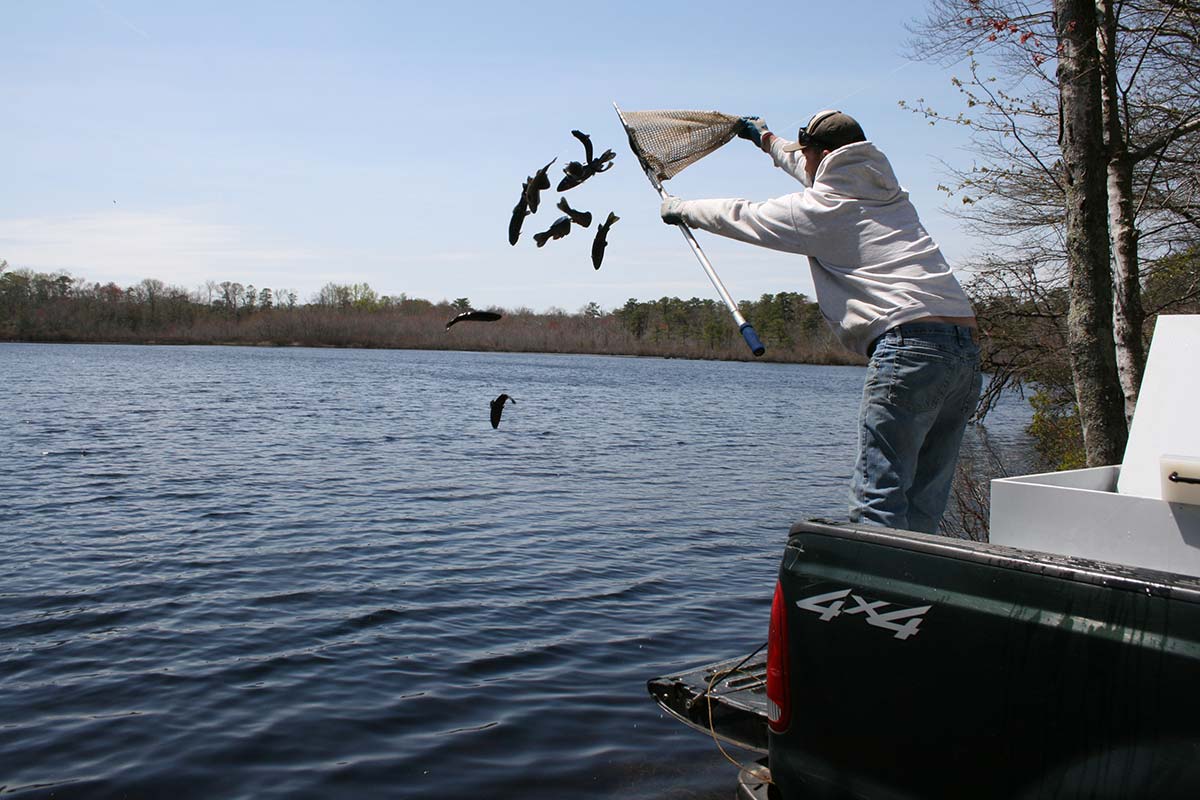
The Pohat
Pohatcong Creek (Warren County): Munsee translation Pohwihtukung for “At the rippling river,” this mid-size flow is narrow from its headwaters to where it crosses under Route 57 in Washington then gradually widens as it passes through Broadway and down through Greenwich and Pohatcong. There are 35 salmonid points of entry stretching through the 13.4 miles being stocked. A season total of 20,170 rainbows will be let loose.
The “Pohat” has a split stocking schedule with a Tuesday closed stocking date. The upper (above Route 31 around Karrsville) will be hit with 380 preseason and then 150 on April 18 and May 2. Below Route 31 it’s 6,230 before the April 8 opener, and then 2,340 April 11, 2080 April 18, 25 and May 2 and 9, then 1300 May 16 and 23. Up top, around Karrsville and under Route 31, its brushy banks makes for a challenging presentation. Bait rules here. Garden worms, waxworms, the Gulp Earthworm, and mealworms are deadly, but don’t discount connections via sizes 0 and 1 spinners and featherweight spoons like the P’Cola Niti-1.
The mid-section of the creek is under Trout Maintenance classification. The lower reach is Trout Production, and the steeper gradient, more rock and gravel bottom, and colder water lend themselves well to natural reproduction of brown trout. This scenic lower section is prime fly fishing water, with hardware also a major player. A deadly combo we’ve discovered, especially when at full flow, is a Trout Magnet head (gold or plain head/Bubblegum, Gainer grub) with a 1/200 ounce Mini-Magnet (silver or black head/ white, black grub) as a trailer on a 1-pound test (7X) 8- to 12-inch trailer. Fathead minnows will be a limit maker when it comes to both wild browns and holdover and stocked rainbows.
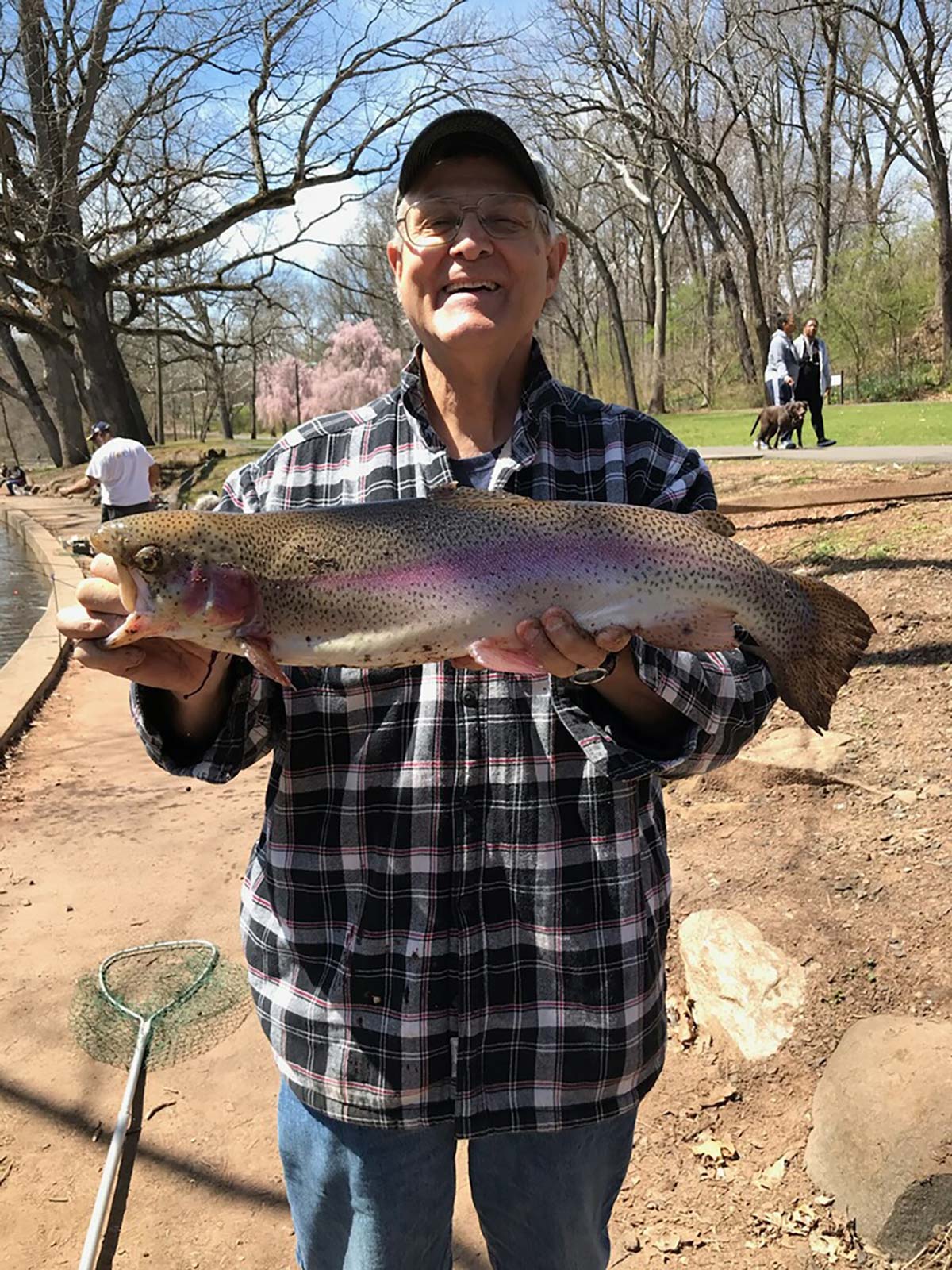
Lock, Lop & Cap
Lockatong Creek (Warren County): Again, Munsee. Lok-a-tink meaning “Place of wheat meal.” The 3.5 stretch that receives fish has seven stocking points. The lower stretches will maintain salmonids year-round, but the upper areas are non-trout, meaning catch-and-keep. A load of 830 will be loosed preseason. In-season stocking Wednesdays, April 19, May 3 and 17 with 330, 330 and 210 respectively, and 330 being delivered Mondays, April 24 and May 8 for a 2,360 springtime total. Bait dominates the approach here, and this includes the likes of the Gulp waxies, garden worms and salmon eggs. On stocking days, and the day or two after, the recent residents can be picked off with judiciously drifted nymphs and basic wets like the Woolly Worm and Black Gnat. The 00 and 0 Mepps Black Fury, and the Purple Haze and Meal Worm pattern Trout Magnets on a chartreuse or gold head, with the most subtle-but-seductive of rod tip calisthenics, will bring the trout out of a hungry hideaway.
Lopatcong Creek (Warren County): “Watering place for deer,” is the Lowan Peek Achtu Onk translation. There are nine stocking points along the 3.6-mile discharge route. Hit with 930 pre-season, it’s stocked again on April 17 and April 25 (370 each time), then two more doses of 370 on May 3 and May 9 for an amount of 2,640. This meandering brook-to-stream and back again is under the “Wild Brown Trout” managed classification, with the retained brownie minimum size being 12 inches. Two can be retained in the under the statewide six trout daily limit with a pair still legal when the limit drops to four after Memorial Day.
There is a strong population of wild brownies throughout most of its length. A downgrade to Trout Maintenance classification occurs .12 miles above to its confluence with the Delaware River. It’s a preseason shot of 930 ‘bows and a total load of 2,640. In-season dates/numbers are 370 (April 17), 370 (April 25), 370 (May 3), 370 and 230 (May 9 and May 16 respectively). Wild browns will be found here and are certainly a bonus to the rainbow brethren. Bait, notably garden worms, garlic and/or shrimp salmon eggs, and fatheads, are monstrously effective, especially along the Lock Street beat in Phillipsburg. Nos. 00, 0 and 1 spinners, nymphs and soft hackle flies, also get it done. Caution: beware the muddy bank sides after a rain.
Capoolong Creek (Warren County): Pittstown off Route 173 is ground zero for this beautiful beat of trout water. An Old German origin to the name, Kake Poulin, loosely translated to “Wild goose place.” The Capoolong represents a smaller version of the nearby South Branch of the Raritan with its rock and pebble strewn bottom, tailing pools, chutes, pockets, and side eddies. Classic trout water, for sure. It’s classified as Trout Production, and there are wild browns in residence. The pre season load of 960 and the five in-season payloads are deposited at seven points along the 3.4 mile course. Stocking dates are April 19 (380), April 24 (380), May 3 (380), May 10 (380), and May 17 (240) for a season total of 2,720.
We reserve the Capoolong as hardware water, and will sometimes opt to fly it, particularly mid-May into June. This is short shot fishing with the likes of spinners and the smaller plugs such as the Rapala Minnow and Yo-Zuri Pin’s Minnow. Oftentimes it’s only three turns of the reel handle before the offering is out of the zone, much the same as the Lopatcong, Lockatong and upper Pohatcong.
The New Jersey trout season opens 8 a.m. Saturday, April 8 with a daily limit of six trout at a 9-inch minimum, with the bag limit reduced to four after Memorial Day, May 29.

